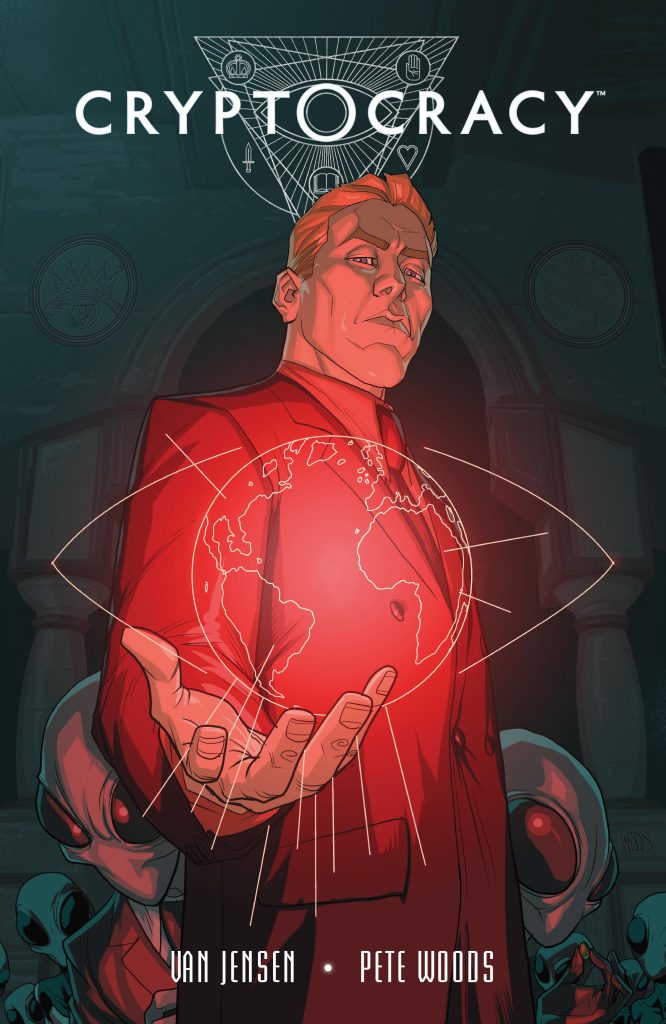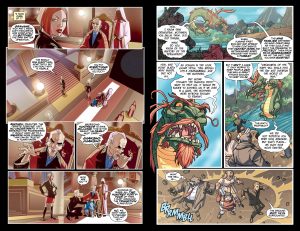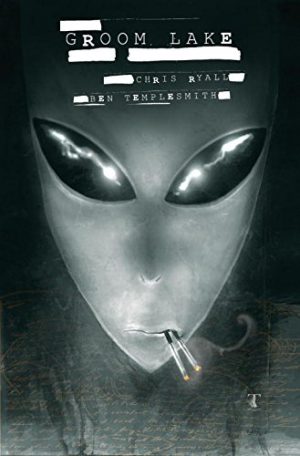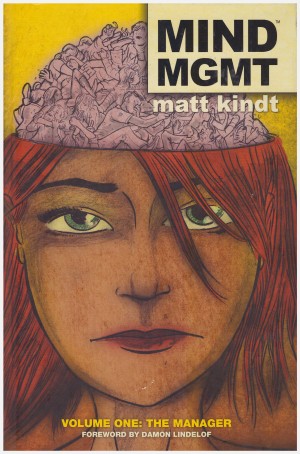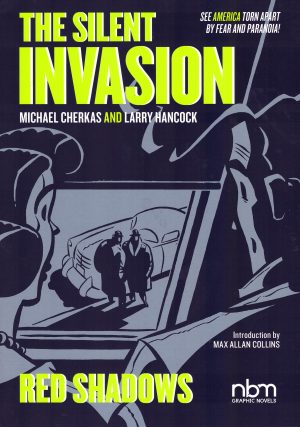Review by Frank Plowright
Cryptocracy refers to rule by unelected private individuals controlling the strings of those who are elected, the shadowy elite so beloved of conspiracy theorists, and that’s what Van Jensen and Pete Woods are dealing with in this action thriller.
An overstated opening defines humanity over nine rankings, each becoming more exclusive, with anyone from fourth on up self-important and entitled, the mantra for consumption being that they’re shepherding humanity to a better future. Nine is also the number of families controlling the world, each named after one of the nine planets. Having introduced all that, Jensen then confirms that pretty well all conspiracy theories are actually true, dropping reference after reference in the dialogue as genetically engineered intelligent bears converse with small grey aliens. This elite is arrogant and confident that nothing of significance occurs without their planning or knowledge, so when one family’s leadership is assassinated all hell breaks loose, and the fingers start pointing.
He takes a broader approach with technology, and the series is set in the present day, but with the limited number of families controlling the world, structurally at least Jensen brings Greg Rucka’s Lazarus to mind. He certainly sets a similar mood. No family trusts the others, and for all the claims of helping humanity, their focus is expansion and greater control. Jensen also plays a lot with the number nine, further introducing nine ancient prophecies. However, he takes things too far, becoming too involved in unwrapping mysteries from enigmas, each of which requires an explanation, and by halfway Jensen is likely to have lost the attention of all but the most dedicated. He’d have been better concentrating on letting us know more about the people involved, most of them instead reduced to mouthpieces for more explanations. When one of them claims he always thought there’d be some truth, but there isn’t, just more stories, you’ll know exactly how he feels.
All of this is a pity for Pete Woods, whose art serves the story as best he can, but evolved from the style he used on superhero material to an appealing blocky, two dimensional animated look. Where the art fails is that it concentrates on people. That may have been a demand of the script, but too often we hear about events instead of seeing them, and apart from anything else that would have provided some contrast to all the talking.
We’re almost halfway through before Jensen properly kicks his story into gear. Having established the Nine as all powerful, he sets about dismantling them. A being called Hum appears to personify ancient prophecies of destruction, and a podcast journalist with a long history of exposures is given a wedge of evidence. As the certainties the Nine have held to be true for centuries take a quantum shift, so do the scales fall, and we begin to wonder how we could swallow a massive invisible headquarters beneath Denver airport. By the end, the cultivation of a sinister organisation has devolved into something not far removed from Masters of the Universe. A deliberately open ending suggests a sequel, but that never appeared.
